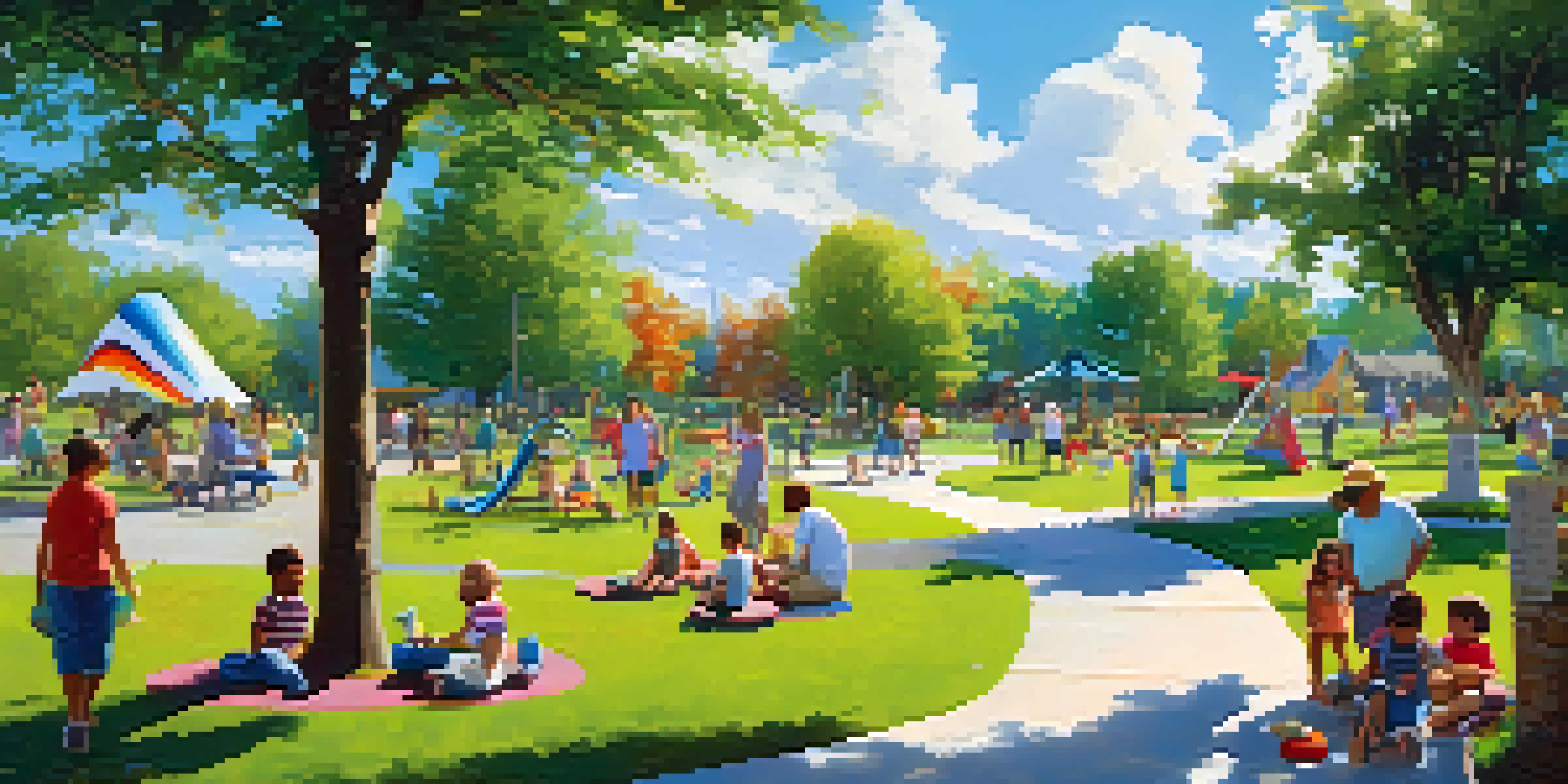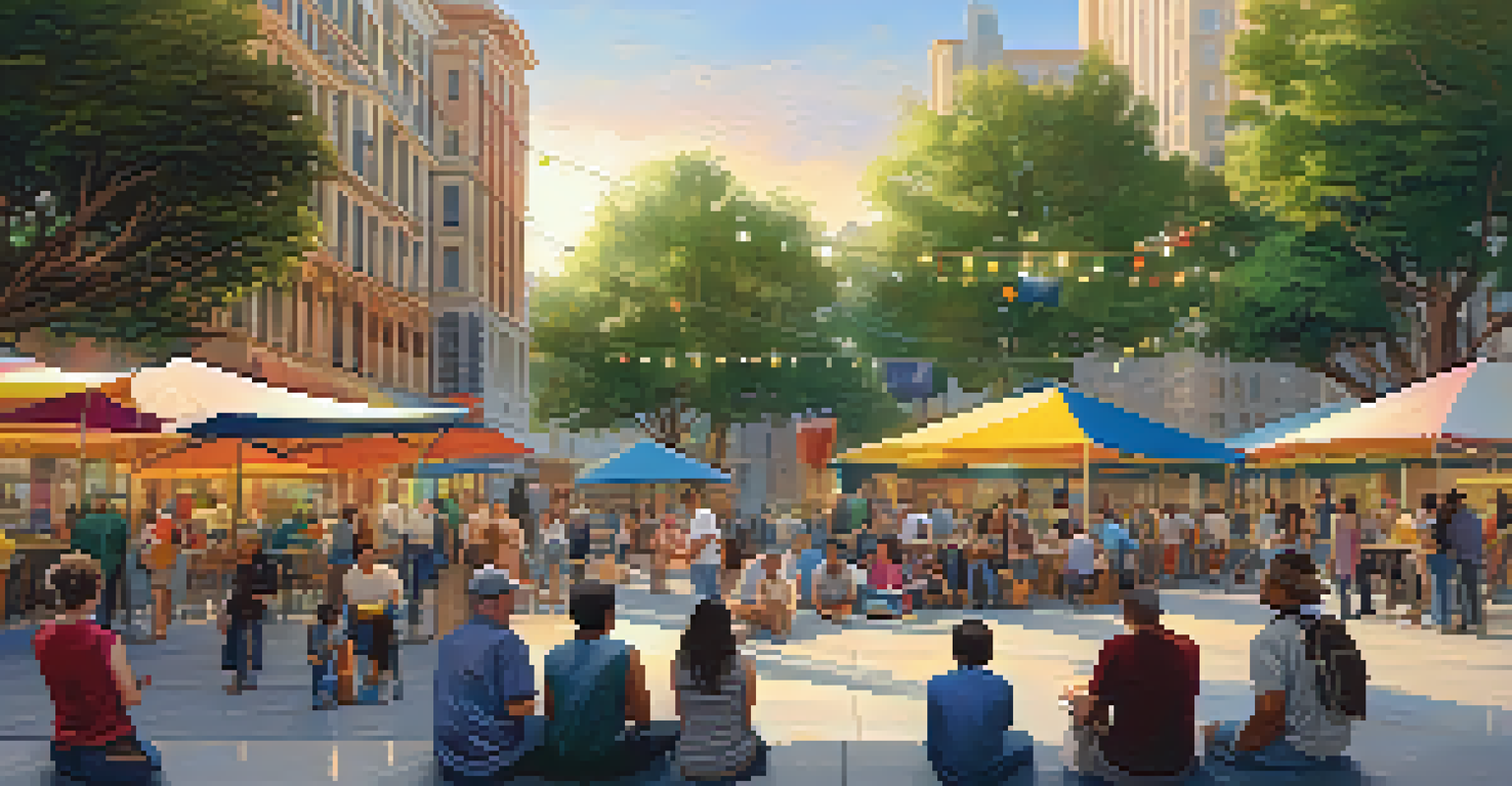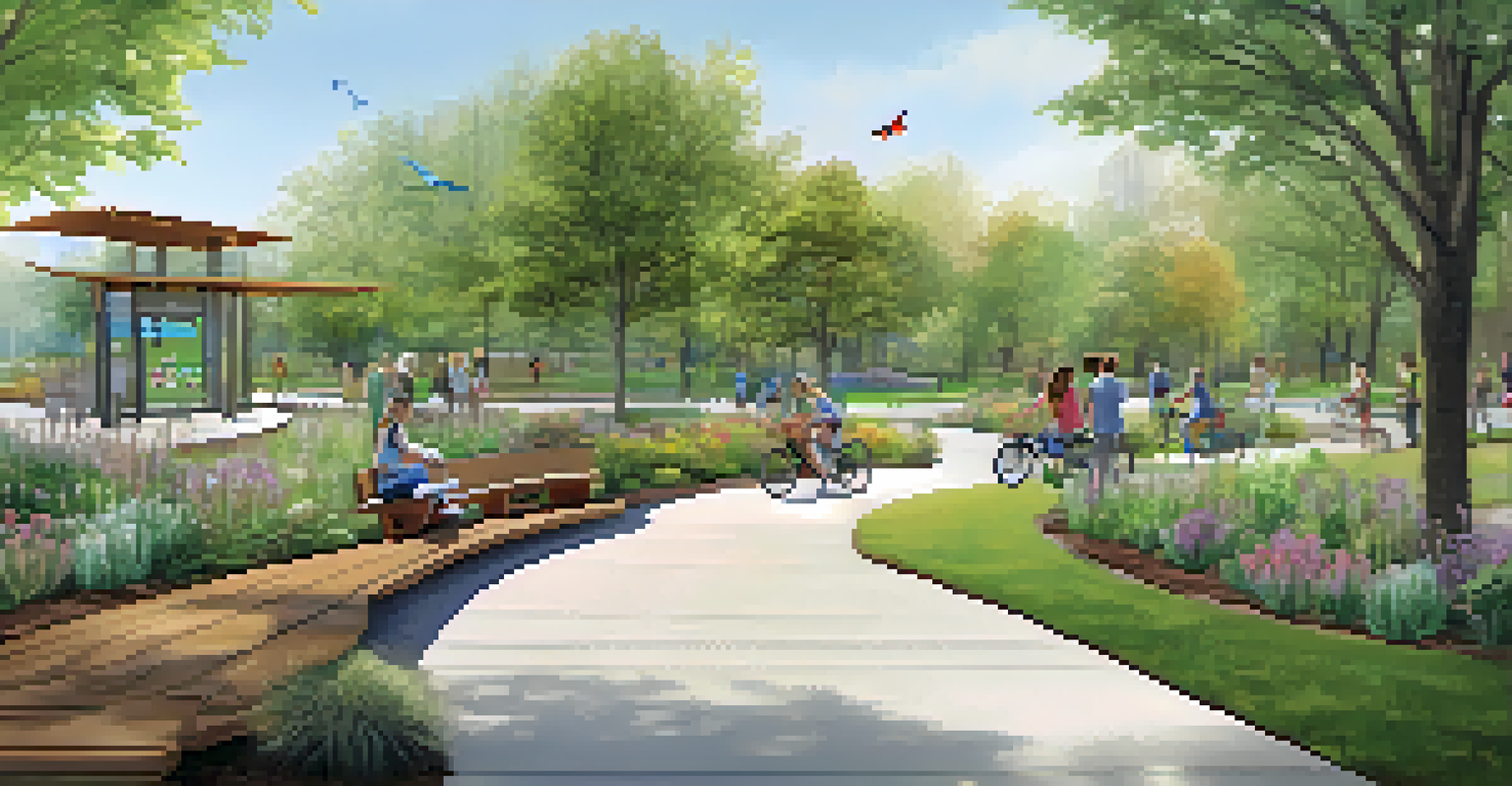Public Spaces: Designing for Community and Environmental Health

Understanding the Importance of Public Spaces
Public spaces are crucial for fostering community interaction and engagement. They serve as the heart of neighborhoods, where people come together to socialize, play, and relax. Imagine a bustling park filled with laughter, where children play games and families have picnics; this is the essence of community.
Public spaces are the lungs of our cities, providing fresh air and a place for community interaction.
These spaces not only enhance social ties but also contribute to mental health by providing a break from daily routines. Spending time outdoors can reduce stress and improve mood, making public spaces vital for emotional well-being. Think of them as natural therapy centers where the fresh air and greenery work wonders.
Moreover, public spaces can promote inclusivity, offering environments where people of all ages and backgrounds can connect. Designing these areas with accessibility in mind ensures everyone can enjoy what they offer, creating a sense of belonging that strengthens community bonds.
Designing for Environmental Sustainability
When planning public spaces, integrating environmentally sustainable practices is essential. This involves using materials that minimize ecological footprints and designing landscapes that support local wildlife. Picture a park that uses recycled materials and features native plants, creating a habitat for local birds and butterflies.

Incorporating green infrastructure, like rain gardens and permeable pavements, helps manage stormwater and reduces urban heat. These elements not only enhance the aesthetic appeal but also play a significant role in combating climate change. It's like giving Mother Nature a helping hand right in the heart of the city.
Public Spaces Foster Community
Public spaces serve as essential gathering spots that enhance social ties and promote mental well-being.
Sustainable design also encourages responsible behavior among community members. By showcasing eco-friendly practices in public spaces, individuals are more likely to adopt greener habits, such as recycling and conserving water. This ripple effect reinforces the importance of caring for our environment.
Creating Safe and Welcoming Environments
Safety is a cornerstone of effective public space design. Well-lit areas, clear sightlines, and active community involvement can significantly reduce crime and enhance feelings of security. Imagine walking through a park where you feel comfortable and at ease, knowing that others are around to share the experience.
Designing public spaces that are inclusive and accessible enhances not just the environment, but the community's spirit and health.
In addition to physical safety, fostering a welcoming atmosphere is essential for inclusivity. This can be achieved through thoughtful landscaping, accessible pathways, and amenities that cater to diverse needs. Think of a space where families, seniors, and children all find something enjoyable to do, making it a true community hub.
Community engagement in the design process is crucial. By involving residents in discussions and decisions, designers can create spaces that reflect the community's values and needs. This participatory approach helps ensure that public spaces are not only safe but also cherished by those who use them.
Promoting Physical Health Through Design
Public spaces play a significant role in promoting physical health by encouraging active lifestyles. Features like walking paths, bike lanes, and sports facilities invite people to engage in physical activities. Imagine a community park where walking trails meander through beautiful landscapes, enticing residents to get moving.
Access to recreational areas also helps combat sedentary behaviors prevalent in modern society. By providing spaces for sports and exercise, we can inspire healthier habits, especially among children and teens. Think of these areas as gateways to a more active lifestyle, where fitness and fun go hand in hand.
Sustainable Design Matters
Incorporating environmentally sustainable practices in public space design benefits both communities and the planet.
Furthermore, the design of public spaces can support mental well-being through physical activity. Engaging in exercise outdoors has been shown to boost mood and reduce anxiety. So, a simple stroll or jog in a well-designed park can be a powerful tool for enhancing overall health.
Integrating Art and Culture in Public Spaces
Art and culture are vital components of public spaces, adding vibrancy and character. Murals, sculptures, and performance spaces can transform ordinary areas into cultural landmarks that reflect community identity. Picture a public square adorned with colorful art, inviting people to gather and celebrate local talent.
Incorporating cultural elements in design fosters a sense of pride and belonging among residents. Community events, like art festivals or concerts, can take place in these spaces, further enriching the local culture. It's like creating a canvas where life unfolds, full of stories and shared experiences.
Moreover, artistic installations can provoke thought and dialogue, making public spaces not just places to visit but also to experience. They encourage engagement and participation, inviting people to connect with art and each other. In this way, public spaces become dynamic hubs of creativity and expression.
The Role of Technology in Modern Public Spaces
Technology is revolutionizing how we interact with public spaces, enhancing both functionality and user experience. Smart benches that charge devices or interactive kiosks providing information can make visits more convenient and engaging. Imagine a park where you can easily find out about upcoming events or access Wi-Fi while enjoying nature.
Additionally, technology can improve safety and accessibility. Surveillance cameras and emergency call buttons can help ensure users feel secure, while apps can provide real-time information about public transport or space availability. This integration creates a more user-friendly environment that adapts to modern needs.
Safety and Inclusivity are Key
Creating safe, welcoming environments in public spaces encourages diverse community engagement and participation.
However, it's crucial to balance technology with nature, ensuring it enhances rather than detracts from the experience. Thoughtful implementation of tech in public spaces can create harmonious environments that respect both community values and the natural world.
Evaluating the Impact of Public Space Design
Assessing the impact of public space design is essential for continuous improvement. Gathering feedback from community members can provide invaluable insights into what works and what doesn't. Think of it as a community report card, helping planners understand how well spaces meet the needs of residents.
Metrics such as usage frequency, community engagement, and even health outcomes can help measure success. By analyzing data, designers can make informed decisions about future enhancements or changes. It's a way of keeping a finger on the pulse of the community’s wants and needs.

Moreover, success stories can inspire other communities to invest in their public spaces. By showcasing effective designs and positive outcomes, we can encourage a ripple effect that promotes better public space planning everywhere. The goal is to create spaces that truly enhance community and environmental health.